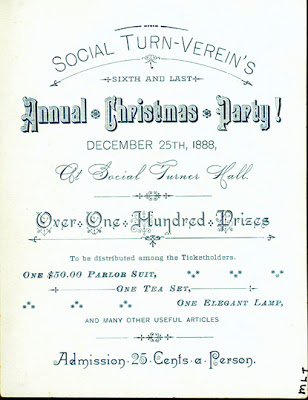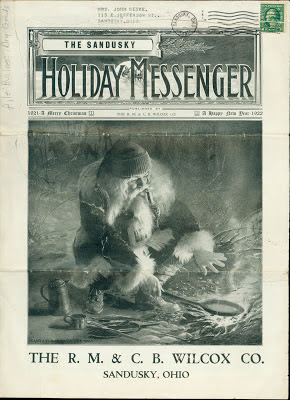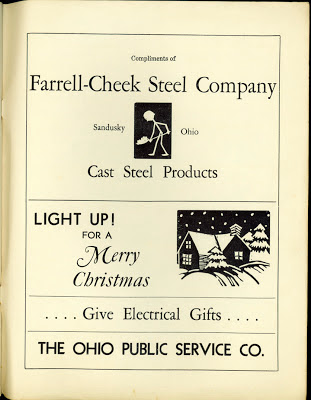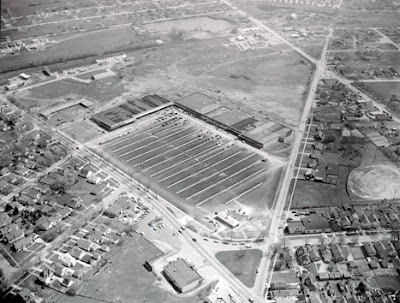The Allen Fox family is pictured below, around the turn of the twentieth century. Though difficult to read, the names of the children of Mr. and Mrs. Fox have been written on the picture. Standing are: Mary, George, Emma, Joe, Fanny, Dick, and Martha Fox. Seated are: Polly, Allen Fox, Eliza Catharine, and John Fox.
A brief biographical sketch of Allen Fox is found in the
History of Erie County, Ohio (1889), edited by Lewis Cass Aldrich. Mr. Fox was born in Perkins Township on July 11, 1826, to Roger and Polly Weatherly Fox. In 1851, Allen Fox married Eliza C. Bartlett, and they had a family of ten children. A lengthy obituary for Mrs. Fox appears in the February 6, 1903 issue of the
Sandusky Register. The article said that Mrs. Fox had been widely and favorably known, and the large gathering of people at her funeral indicated the respect and esteem of her family and friends. “Those who knew Mother Fox best, speak in cordial praise of her goodness, sympathy and service in times of sickness. By day or night, she was ever ready to respond to the call from the sick room, and many were the sick and dying cheered by her ministrations.” The funeral for Mrs. Fox was held at the Perkins Methodist Church, and burial was in Perkins Cemetery.
Not pictured in the family photo was Ida Fox, who died on October 30, 1873, as a young person.
Mrs. Fox’s surviving children were listed as: Polly Mackin, John R. Fox, Joseph A. Fox, George Fox, Emma Strong, Sylvester D. Fox, Mary Louise Hess, Martha Richards, and Kate Lucy Frances Morris.
Allen Fox died on November 27, 1906. His obituary was in the December 5, 1906
Sandusky Register, which reported that the old log house that remained on the Fox farm was also the place of Mr. Fox’s birth. Mr. Fox was survived by nine children, twenty two grandchildren, eight great-grandchildren, and two brothers.
The citations for the obituaries of Mr. and Mrs. Allen Fox were obtained by accessing the Obituary Index from the R. B. Hayes Presidential Center. Obituaries can help add human interest to your family history, as you gather data about your ancestors from vital records, family Bibles, and other sources. While the R. B. Hayes Presidential Center is located in Fremont, Ohio, hundreds of obituaries of persons who resided in Erie County have been indexed. If you find a citation in the
Hayes Obituary Index that cites its source as a Sandusky newspaper, you can find the actual article on the microfilmed copies of the
Sandusky Register and other Sandusky newspapers in the Archives Research Center of the Sandusky Library.
While the handwritten names on the Fox family photograph did indeed help us identify the individuals pictured, it is not a good idea to literally write on a photograph. You can write on the back of the photograph with a soft pencil, preferably in the margins of the photograph. Another method would be to store the photograph in an acid-free sleeve, and on a separate piece of paper, identify the people and places that are pictured, using archival quality paper and pens. To read more about using photographs in your family history, see Maureen Taylor’s book entitled
Uncovering Your Ancestry Through Family Photographs, available at the Sandusky Library.

 this blog
this blog























































